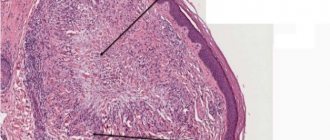Inflammation of the part of the gums adjacent to the teeth is called gingivitis. Accompanied by bleeding gums, gingivitis is often confused with periodontitis, but in the latter case the disease leads to the destruction of bone tissue. Periodontitis is the result of neglected gingivitis.
Gingivitis happens:
- catarrhal;
- hypertrophic;
- ulcerative-neurotic.
Each of these forms has its own distinctive characteristics and methods of treatment.
Gingivitis in adults: causes of the disease
The disease, which affects all categories of people (children, adults, pregnant women), occurs primarily due to weakened immunity and poor oral hygiene.
The development of the inflammatory process occurs at a low speed, so the disease is often not noticeable for a long time to an ordinary person who is far from dentistry. However, if you do not consult a doctor in a timely manner, serious complications may develop, which can lead to a more painful course of the disease and lengthy treatment.
There are three stages of development of gingivitis:
- mild (the disease affects only the spaces between the teeth);
- medium (the disease affects the edge of the gum);
- heavy.
The more time passes without treatment, the further the lesion spreads, eventually covering the oral mucosa.
The causes of the disease are divided into internal and external.
External ones include:
- injuries;
- burns of the oral cavity;
- influence of radiation;
- effects of heavy metals on the human body.
The internal reasons are as follows:
- development of molars (often during their growth, soft tissues are injured, which causes bleeding);
- lack of vitamins and minerals in the diet, which leads to decreased immunity;
- gastrointestinal diseases;
- various infections;
- neglected carious formations.
Treatment of gingivitis at home
Gingivitis is an inflammatory process that can be eliminated without serious medical intervention. At this stage, treatment with folk remedies is effective. But if the disease is left to chance, gingivitis can cause periodontitis, a disease that is much more difficult to cure. Therefore, treatment of gingivitis in children and adults is also reliable prevention.
A decoction of oak bark, medicinal chamomile, sage, as well as commercial anti-inflammatory drugs are used to treat gingivitis at home. They have a soothing, antimicrobial and astringent effect.
Symptoms of gingivitis in adults
The onset of the disease is indicated by a feeling of discomfort that occurs in the oral cavity. The affected area turns red and may increase in volume. While brushing your teeth and eating solid foods, some bleeding is allowed, but there is no pain at this stage yet. Increased salivation may occur.
Gradually, the inflamed gum begins to lag behind the tooth, and food debris accumulates in the resulting gap, which leads to the formation of an unpleasant odor. If treatment is ignored, the resulting pocket may develop tooth decay.
At this stage, pain begins to appear, which intensifies while eating (especially when eating hot or cold food). Often inflammation can be accompanied by increased body temperature, a feeling of weakness, and increased irritability.
During the examination, accumulated plaque or caries is clearly visible in the area of inflammation. Blood may be released during a dental examination.
If the disease has become chronic, then the above symptoms may not be so clearly expressed, but it is impossible not to notice hypertrophied soft tissues.
Prevention of gingivitis
Gingivitis is easier to prevent than to treat. To do this you need to follow these rules:
- Brush your teeth thoroughly twice a day. Rinse your mouth after every meal.
- Try not to eat a lot of sweets, especially sugary drinks. Eating more fresh, solid vegetables and fruits strengthens the body and helps remove plaque.
- Visit your dentist once or twice a year for an examination and professional cleaning. It will remove plaque and be able to recognize gingivitis at an early stage.
- Treat all serious diseases of the body in a timely manner.
- Avoid excessive stress.
- Consult a doctor immediately if installed braces, fillings or dentures constantly injure your gums.
These measures will help you avoid gum disease and keep your mouth healthy.
Catarrhal gingivitis: symptoms and treatment
The main reason for its development lies in poor hygiene. Plaque accumulates on the surface of the teeth, including on their necks, which gradually hardens, turning into stone.
In addition to neglect of hygiene, catarrhal gingivitis can be caused by a lack of vitamin C in the body, hormonal imbalances and blood diseases. This form of the disease is the most common, occurring very often in women carrying a child.
The disease can be distinguished by the following symptoms:
- swelling of the gum edge, its redness or cyanosis;
- bleeding and pain during cleaning;
- plaque visible to the naked eye.
Catarrhal gingivitis can be:
- acute - this condition is characterized by the rapid development of symptoms;
- chronic, when the symptoms are mild, exacerbating only during periods of weakened immunity (for example, during a cold).
Catarrhal gingivitis: treatment in adults
Since the cause of gingivitis is plaque, the first step is to eliminate it. You can get rid of it by using a regular brush, but if the plaque has managed to mineralize and turn into stone, then you will have to spend time visiting the dentist.
Plaque mineralizes within less than 16 hours from the moment it forms: this is how tartar appears.
So, the main stages of treatment:
- Removing plaque and tartar. Ultrasonic cleaning has proven itself to be the best, after which it is imperative to undergo the procedure of polishing the teeth and treating the gums with gel. Typically, the total session duration is one hour. As practice shows, even after completing this stage of the treatment process, the patient feels much better.
- Anti-inflammatory therapy. Since catarrhal gingivitis affects only the surface of the gums, treatment can be carried out at home. It takes 10 days, then you will need to visit the doctor again for a follow-up examination. In most cases, anti-inflammatory gels are prescribed, which should be applied to the gums, rinses with Chlorhexidine, and a special toothpaste.
Description of anti-inflammatory therapy
For gingivitis treatment to be effective, it is recommended to treat the gums twice a day. Of the wide variety of gels, it is worth using “Cholisal Gel”, and using Chlorhexidine 0.05% as a rinse solution. The widely advertised Metrogyl Denta gel is slightly less effective.
The procedure is as follows: after waking up, routinely brushing your teeth (it is better to buy a Soft brush during treatment) and breakfast, you should thoroughly rinse your mouth with Chlorhexidine, then dry the surface of the gums with gauze and rub it with your finger. The gel should be applied both from the outside of the teeth and from the tongue. After treating your gums with gel, you should not drink or eat for at least half an hour. Some components of the product can cause salivation: saliva can be swallowed without fear, since it does not contain anything harmful to health.
It is necessary to clearly understand that curing gingivitis and then returning to your previous lifestyle means dooming yourself to the recurrence of symptoms in the near future. To prevent this from happening, prevention is important, which consists of properly brushing your teeth after every meal. Minimizing the risk of relapse is also influenced by the absence of caries, so carious cavities must be healed.
Causes of gingivitis
Gingivitis
There are several causes of gingivitis, which can be divided into external and internal.
External reasons
They are the most common, usually easy to detect and are considered the main factors causing gingivitis:
- Poor oral hygiene. The most popular reason is that bacteria multiply in plaque and tartar, which is formed due to insufficient hygiene, which provoke gum inflammation.
- Injuries and burns to the mucous membrane due to eating hard or hot foods. If they are regular, the wounds can become infected, which provokes inflammation.
- Injury to gums due to fillings, braces and dentures. Since these structures are constantly in the mouth, injury becomes regular.
- Smoking. Tar and other substances from cigarettes settle on the teeth, forming plaque, and nicotine impairs blood flow to the gums, which in combination provokes inflammation.
- Eruption of wisdom teeth. If a tooth is cut for a long time and incorrectly, it can become a source of constant inflammation and provoke gingivitis.
- Caries and other dental diseases. They also become a source of inflammation, which spreads from the teeth to the gums.
All these reasons, one way or another, cause bacteria to multiply in the mouth, which causes gingivitis.
Internal reasons
These causes are more difficult to distinguish, since they cannot be detected by a simple visual examination of the oral cavity. Often they serve only as an additional factor that increases the risk of developing gingivitis in the presence of external causes.
- Lack of vitamins and microelements.
- Weakened immunity, immunodeficiency states.
- Long-term use of antibiotics.
- Impaired metabolism.
- Gastrointestinal diseases.
- Frequent sore throats, tonsillitis, sinusitis.
- Stress and psychological disorders.
- Pregnancy changes hormonal levels and the worst effect is on the gums.
- Diabetes.
- The presence of inflammatory processes in the body - bacteria can enter the gums through the blood and cause gingivitis “from the inside.”
It is precisely because of the presence of such internal causes that a comprehensive diagnosis is important for gingivitis - sometimes even eliminating plaque and other external factors does not help get rid of inflammation, so more serious treatment must be prescribed.
Necrotizing ulcerative gingivitis: symptoms and treatment in adults
The cause of the disease, as in the previous case, is non-compliance with hygiene, which has taken a critical form.
Due to the increase in plaque volume, gum necrosis develops. This often occurs against the background of decreased immunity or exacerbation of chronic diseases.
The first sign of ulcerative necrotic gingivitis is areas of ulceration on the gums and an increase in temperature to 39 degrees. Headaches and smell of rotting breath are possible.
This form of the disease should be treated by a dentist, and on an emergency basis. Dental plaque is removed along with the gray-greenish plaque, strong antibiotics are prescribed, then, when the inflammation subsides, gels are prescribed to accelerate the healing and restoration of the mucous membrane.
What happens if gingivitis is not treated?
Many forms of gingivitis do not seem dangerous at first glance, especially when the acute stage passes. A person gets used to mild pain and bleeding, so he does not go to the doctor. However, if gingivitis is not treated in time, it can lead to the following unpleasant consequences:
- Periodontitis is an inflammatory disease of the gums, in which teeth become loose and fall out, causing severe pain and bad breath.
- Frequent caries and throat diseases.
- The gums have receded to such an extent that the exposed roots of the teeth begin to cause severe discomfort.
- The spread of inflammation to the jaw bones and the body as a whole, a serious deterioration in overall health, in the worst case, even blood poisoning.
In addition, gingivitis is usually a sign of other unpleasant diseases or conditions, such as poor oral hygiene, which can cause serious dental problems.
All this means that at the first signs of gingivitis, you need to contact your dentist for treatment.
Hypertrophic gingivitis: symptoms, treatment methods
It is characterized by fibrous growth or an increase in the volume of the gums due to swelling. Occurs due to disturbances in the endocrine system, hormonal imbalances and malocclusion.
Treatment will depend on the form of the disease:
- the edematous form involves the use of sclerotherapy, that is, when a special solution consisting of glucose, calcium chloride and magnesium sulfate is injected into the gingival papillae. The procedure is carried out with anesthesia; at least 3 injections are required into each papilla with a break of 2 days.
- in the fibrotic form, deposits are removed and factors traumatic to the gums are eliminated, then anti-inflammatory therapy is prescribed, including applying bandages with heparin ointment and other medications.
Gingivitis: Common Treatments in Adults
Regardless of the type of disease, there are general treatment methods:
- To diagnose the disease, the degree of contamination of the surface of the teeth is assessed. To determine the amount of plaque, special tinting compounds are used - the affected areas change color, which allows the doctor to accurately determine the extent of the problem;
- the patient is selected with the most suitable toothpaste and brush, and is also told about the need to adjust their diet (for example, if a person avoids solid food, this can lead to the accumulation of pathogenic microflora in the spaces between the teeth);
- Professional teeth cleaning is carried out using modern methods (usually ultrasound and further polishing of the cervical area are used);
- the affected tissues are treated with medications, and surgical intervention is used if necessary;
- When chronic diseases are detected, the patient is sent to specialists for further treatment.
Diagnostic methods
A visual examination by a dentist may be sufficient to assess the disease. If symptoms are severe, the doctor may refer the patient for an x-ray. This is necessary if infection of the pulp, periodontal and bone tissue is suspected.
In the presence of ulcers or chronic inflammation, a microbiological analysis is performed, which identifies the type of bacteria and their resistance to antibiotics. If a generalized form is diagnosed, then additional diagnostics are carried out by relevant specialists: ENT doctor, gastroenterologist, immunologist, and other specialists. The patient donates blood for general tests, sugar, HIV infection, syphilis.









